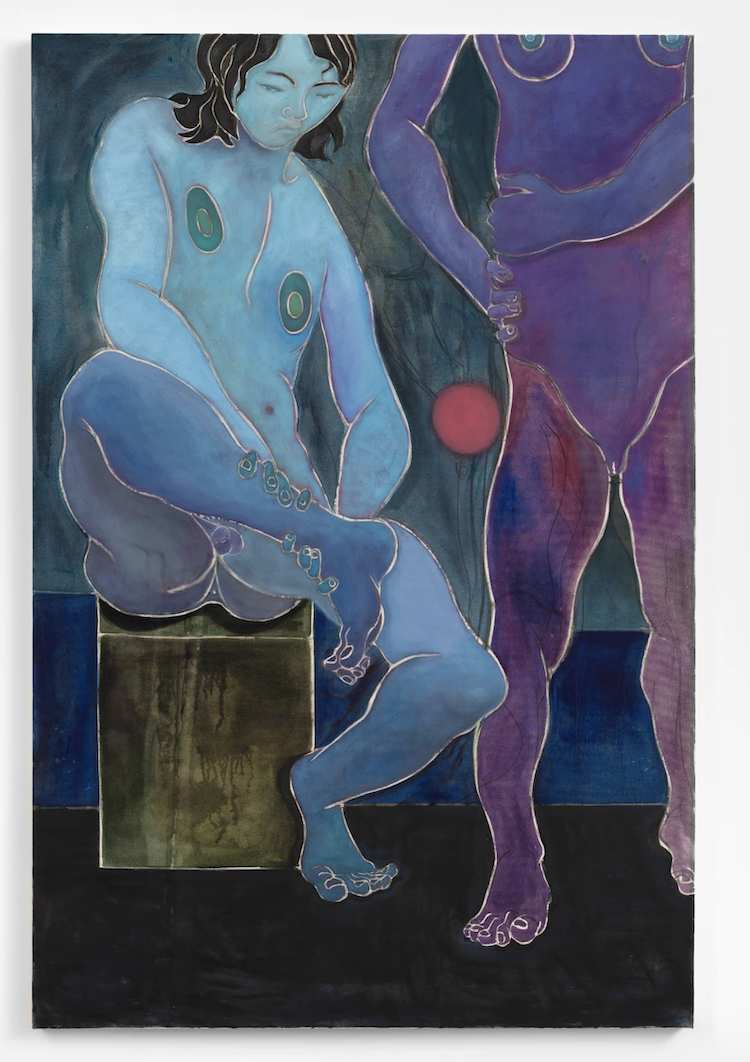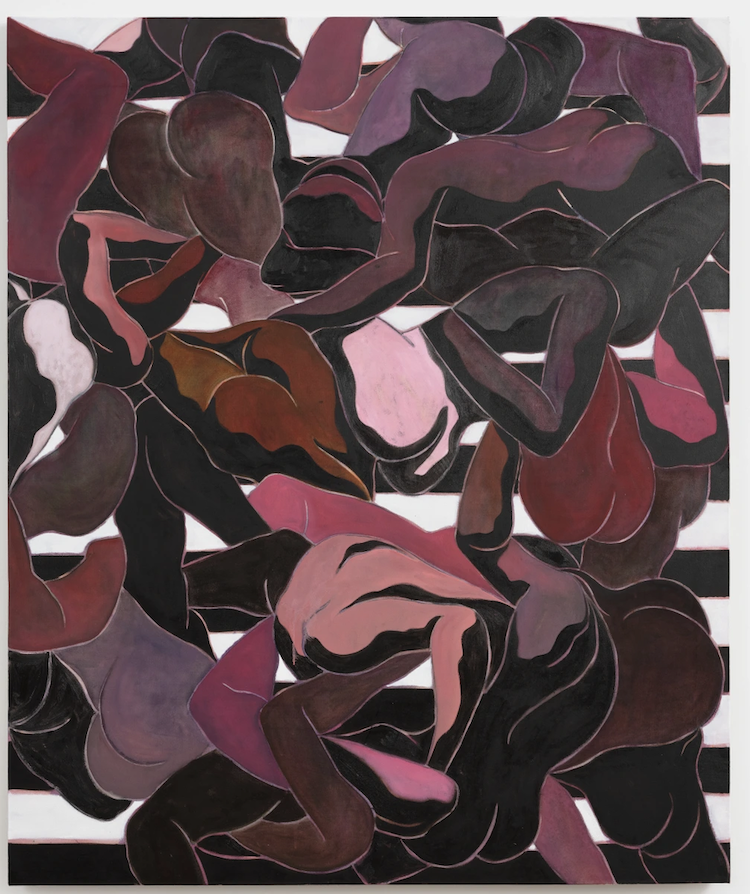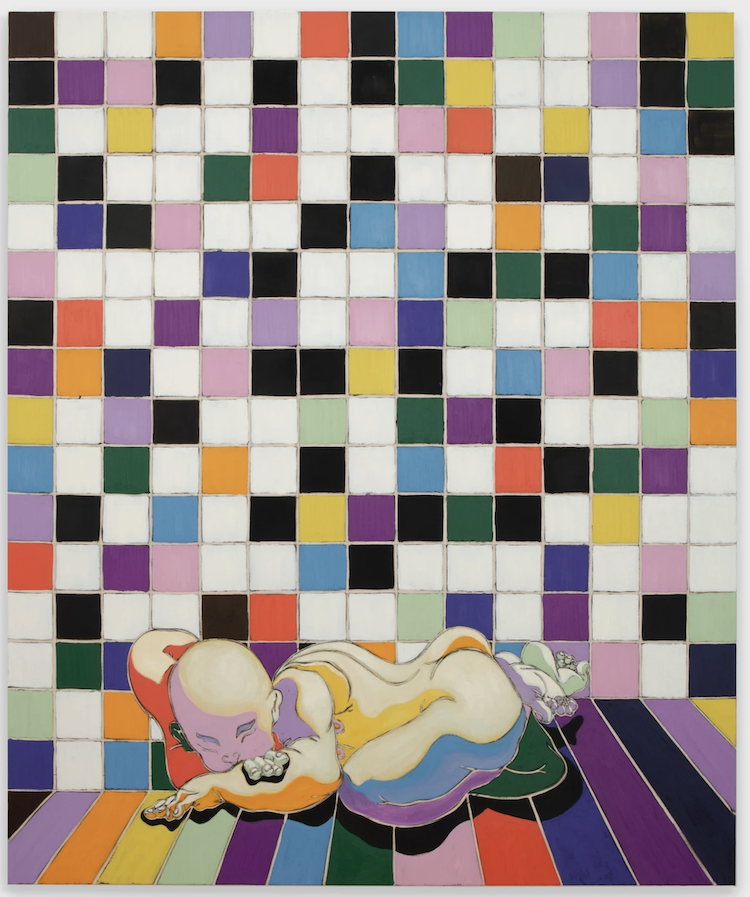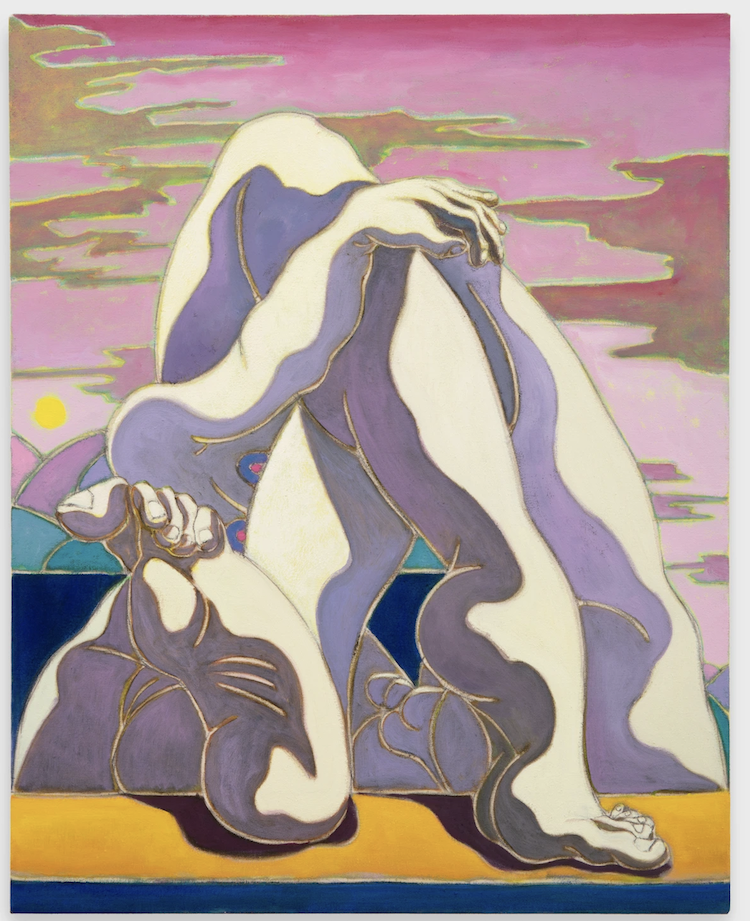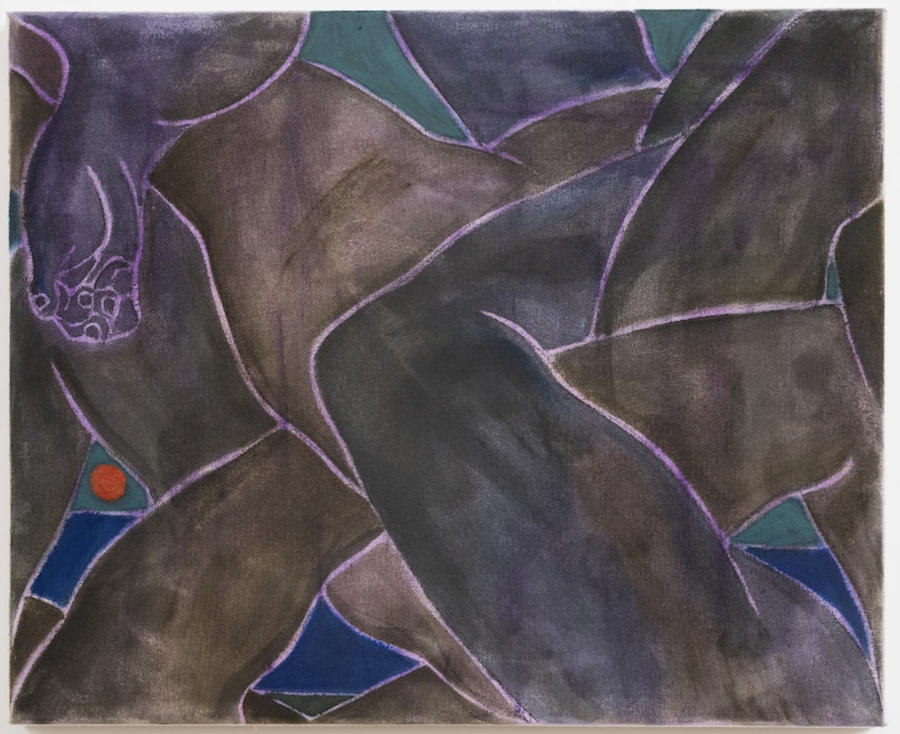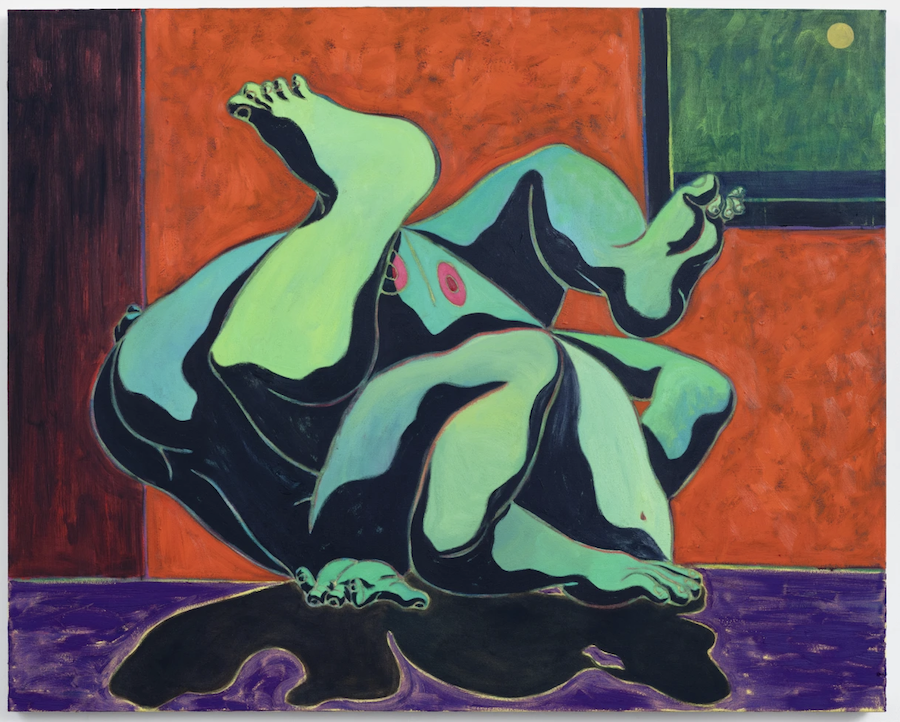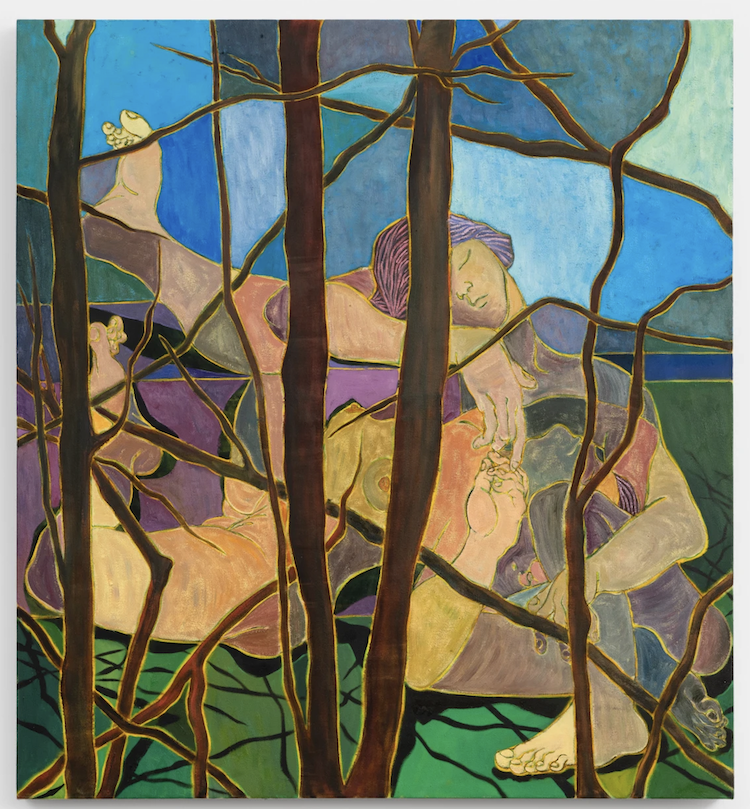Kasmin is thrilled to announce Mark Yang’s first solo exhibition with the gallery. A suite of new paintings by Yang will be on view at 297 Tenth Avenue through February 17, 2024, showcasing recent technical and thematic developments in Yang’s painting practice.
Ambiguity remains a pervading theme in Yang’s hallmark compositions of intertwining body parts that explore the nuances of human interaction. Evading clear assignments of gender, Yang’s figures resist the throes of a totalizing narrative. Yang realizes his new, boldly colorful figures by staining raw canvas with thin, transparent layers of oil paint. Layer after layer, Yang develops full-bodied fields of color that ground his figures in their liminal settings, before defining their backgrounds and shadows. Using techniques associated with the history of abstraction, but departing from the typical use of synthetic acrylics, Yang’s staging of his compositions amplifies a sense of conviction and immediacy often found in drawings onto canvas. Yang’s approach to the line as a tool to build his compositions is akin to that of a draftsman, seen in his dynamic applications of charcoal after the process of staining, which further provide striking delicacies and subtle textures. Yang’s improvisational color pairings reflect an exploratory drive that undergirds his signature mash-up of body parts and limbs. As the artist has stated, “I’m not interested in rendering. I’m more interested in bold colors.”
Yang’s new works see the artist developing the environs of his paintings. Since moving from New York City to New York’s Hudson Valley in 2023, Yang’s paintings increasingly reference nature, as seen in a lively network of tree branches in Sleeping Couple (2023) or in a distant mountain range in Birth (2023). Several works feature circles or semicircles that suggest the sun or moon, rising or setting above a horizontal figure in Asleep (2023) or floating in the frame of an open window in Life (3) (2023), a nod to the rectangular forms of Robert Motherwell’s seminal “Open” paintings. Imbued with a newfound autobiographical impulse, these paintings routinely make reference to Yang’s own life, made most explicit in the figure of a child in Kelly’s Colors for a Larger Wall (2023), realized in the year since the birth of Yang’s first son in 2023.
This body of work expands Yang’s repertoire of art historical references forward in time. Previously invoking Old Masters from Michelangelo to Peter Paul Rubens, Yang’s new paintings allude to the existentialist queries of Francis Bacon while recalling the postwar abstractions of Ellsworth Kelly. The child in Kelly’s Colors for a Larger Wall is positioned before a wall patterned with a brightly colorful grid, instancing a dialogue with Kelly’s Colors for a Large Wall (1951), on view at MoMA. Meanwhile, Phthalo Reverie (2023), the largest work in the exhibition, features an array of anonymous legs and torsos apprehended in a sea of blue, green, and purple; beneath their bodies lie their shadows, glowing with pink contours that offer a sense of foreboding, calling to mind a device often found in Bacon’s major works. Precipitating a new direction in his practice, Yang’s shadows suggestively mimic the shape of the figures, but are brushed with a weight that insists on a form all their own.






